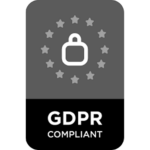When you are planning a cross-country jaunt, road maps are a critical piece of gear. They show you where you are going, attractions along the way, possible areas of danger, and suggest logical places for a stop or a break. They don’t show every single road, exit, or crossroads you will pass, but they give you a pretty good idea of how you are going to get from Point A to Point B.
When you are planning a project, roadmaps do a similar task: They provide a high-level overview of the project, its goals, its deliverables, achievements to meet along the way, and a timeline for getting things done. It’s important not to confuse a project roadmap with a project plan, which is where all of the project’s details are hashed out. Instead, the roadmap is simple, clear, and easy to digest.

What should a project roadmap include?
While project roadmaps can be custom-tailored to meet specific goals and needs, a basic roadmap should contain:
- A rundown of project goals and objectives
- A timeline and a schedule
- Important milestones
- Deliverables
- An analysis of possible risks
- Dependencies (actions that can’t happen before other actions take place)
Who should use a project roadmap?
A project roadmap can be used for many types of projects, including:
- New business development
- Strategy development
- Major event planning
- Technology project creation and output
- IT strategy
- Marketing plans
- Large construction projects
- Business mergers and acquisitions
How can a project roadmap help teams meet their goals?
A project roadmap can be seen as one part of a broader drive to tackle and complete large, complex tasks and initiatives. Not every job needs a project roadmap, but teams commonly use them when they need to:
- Communicate goals to team members, particularly when the team is made of disparate elements that may not always communicate regularly
- Communicate with stakeholders, especially when clear communication about deliverables, methodologies, strategies, and timelines is essential
- Understand tasks by priority, estimate the complexity of any particular task, and signal when complex tasks call for more planning and strategizing
- Chart a new course or engage in work in previously unattempted ways
Ready to create a project roadmap? Here are some tips to get started:
- Make sure you have the right project management software, a system that allows you to easily communicate about the roadmap, then move from planning to action
- Include clear and precise information that is detailed enough so that all parties understand what is needed of them
- Outline achievable, realistic goals – goals that are aggressive enough to meet timelines and deliverables but not so aggressive that it is unlikely they will be achieved
- Ensure there is a communication plan in place that allows all stakeholders the ability to understand what is happening
- Meet often enough so that teams can update each other about progress
What is the best project management software for a project roadmap?
Many project management software solutions are able to accommodate project roadmap creation. Top-tier tools, like those from ProWorkflow, make it easy to move from the project roadmap stage to the project completion stage. ProWorkflow is packed with features critical to project completion such as:
- Detailed project layout, putting everything you need for a project in one place
- Flexible task types and customizable templates
- Easy timesheet entry
- Easy contact management
- Custom workflow categories, views, and grouping
- Simple resource allocation
- Easy template creation
- Comprehensive standard and custom reporting tools
- Optional plugin manager
- Optional quotes manger
- Built-in messaging options
- Powerful file sharing
- Industry-leading security features
- Mobile applications
To learn more, contact ProWorkflow today.

